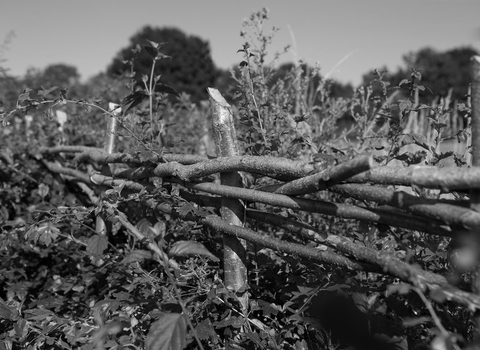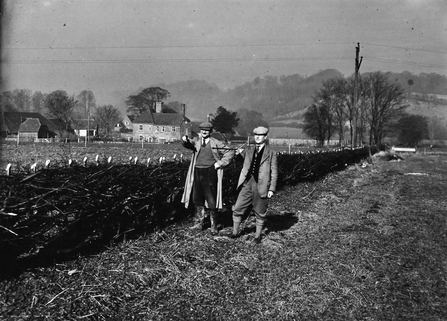Centuries in the making
Hedgerows are an integral part of Surrey’s iconic patchwork quilt landscape and they offer a glimpse into our cultural heritage, with records indicating two-thirds of England has been continuously hedged for over a thousand years.
From the early days of agriculture, hedges were used to create effective barriers which contained livestock and kept wild, predatory animals out. Hedgerows are semi-natural habitats which are subject to natural successional ecological processes. This means they do not retain a linear or dense stock proof structure and require active management to prevent the woody shrub barrier developing into a line of trees.
Traditionally, the management of hedgerows were done by hand and included techniques such as coppicing and pollarding which were used to create a dense, manageable barrier and were typically used for hedges around arable crops. For the management of livestock such as cattle or sheep a more robust technique was required to ensure a gap free structure. The ‘weaving’ technique of hedgelaying created a more durable barrier so laid hedges have historically been used for fields that contain animals.
Across the UK, different styles of hedgelaying have been developed and passed on through the generations. Styles have been influenced by the job the hedge is required to perform, the material available and the local topographic and climatic conditions. For example, hedges that need to be cattle proof must be taller than those built to contain sheep, while sheep hedges need to be denser at the bottom to prevent escape. In windy areas, hedges typically possess a broad and low profile and in upland areas where plant growth is restricted by the climate laid hedges often sit on top of earth banks to provide extra height.
Surrey has a rich tradition of utilizing hedgerow management techniques, particularly hedgelaying. This traditional craft is an important part of our county’s cultural heritage with its own distinctive appearance and one which helps to give Surrey both a sense of continuity and of place to the local community. The hedgelaying style commonly used in Surrey is known as the South of England Style.
The Hedgerow Heritage project aims to reconnect the community with this traditional countryside craft and to empower future generations to take action to preserve our vital hedgerow network.


